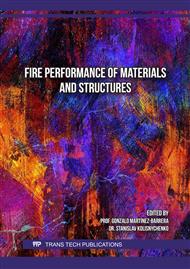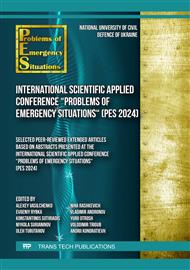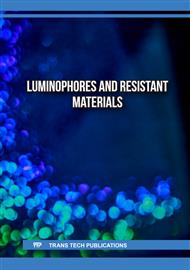p.21
p.27
p.39
p.49
p.61
p.69
p.79
p.91
p.103
Assessment of the Influence of Features of Crack Formation in Reinforced Concrete Products on their Fire Resistance
Abstract:
The paper considers possible scenarios of cracking during heating and their impact on fire resistance using the example of a bending reinforced concrete structure (beam). It is shown that if the calculated critical temperature of reinforcement is less than the critical temperature of concrete (this indicates a significant load on the structure), then cracks in the tensile zone of concrete are formed after reaching the second stage of the stress-strain state. The concrete of the protective layer does not have time to degrade, the depth of the crack remains constant, and the fire resistance limit is calculated taking into account that the thickness of the protective layer of concrete is reduced by the depth of the crack opening. If the calculated critical temperature of the reinforcement is greater than the critical temperature of the concrete (this indicates a slight load on the structure), then cracks are formed as a result of the degradation of the surface layer of concrete. Their depth should constantly increase with the progression of the concrete layer heating to the critical temperature. In this case, the calculation of the fire resistance limit can be performed without taking into account the formation of cracks. Based on the considered assumptions, a methodology for assessing the impact of cracks on the fire resistance limit of bending reinforced concrete structures is proposed, which consists in analyzing the possibility of open cracks (which is facilitated by heating) and estimating their depth. At the next stage, the heating time of the concrete layer to the crack opening depth τΔ1 and the temperature in the crack after this time are estimated. Next, the time until the critical temperature of the reinforcement τΔ2 is estimated when the concrete layer is heated from the bottom of the crack to the reinforcement. The fire resistance limit is defined as the sum of τΔ1 and τΔ2. The results of the calculations according to the proposed methodology showed that the presence of open cracks in bending reinforced concrete structures can almost halve the fire resistance limit.
Info:
Periodical:
Pages:
61-68
Citation:
Online since:
October 2024
Price:
Сopyright:
© 2024 Trans Tech Publications Ltd. All Rights Reserved
Share:
Citation:




